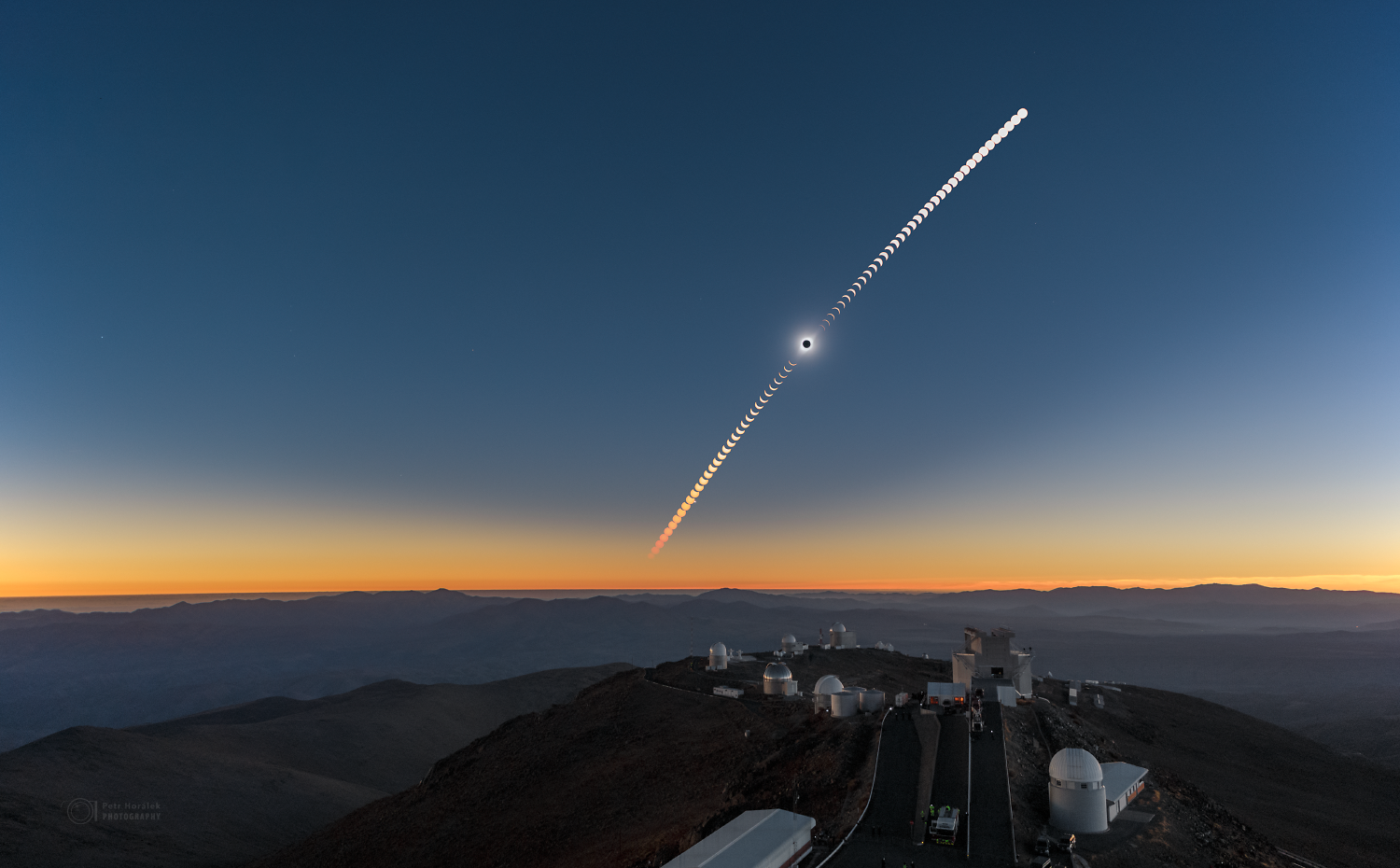
Here comes the dream-shot of total solar eclipse over ESO La Silla observatory. The weather was just perfect, sky clear, wind calm, pleasant chill… and the eclipse–just wow. And plus you can also find Orion constellation on left. Sequence shows the whole eclipse timelapse before sunset over the Pacific ocean with the moment of totality as the foreground.
And here is particular portrait of the extraordinary moment of July 2nd solar eclipse over ESO La Silla observatory. Last sunbeams disappear while shadow of the Moon shows up in the sky, moving from west over the Atacama Desert. Planet Venus is visible over the horizon and even some more stars are on sight. And is just about start of the magical celestial show… Used Canon 6D and Samyang 24 mm (filtered while partial eclipse progressed).
Video: Wide View Experience of Total Solar Eclipse 2019
While total solar eclipse progresses, many amazing phenomena occur around. Solar corona appears, lunar shadow shows up in the sky, creates colorful show, bright stars and planets are visible… Most dynamic moments are, however, during beginning and end of the eclipse, when solar photosphere radiates over the mountainous edge of the Moon. Short moments around the totality gives opportunity to see these small shining regions like a pearls or so-called Bailys beads, named after Francis Baily (1774-1844)–born 245 years ago. The visibility of the beads over La Silla Observatory was unusually long due to position of the spot close to the edge of the path of totality. Everybody will remember that… Used Canon 6D, MTO 1100/f10.5.
Following quite surrealistic image shows us more about the magnetic field of the Sun during the July 2nd solar eclipse. It combines white corona of mine data (visible light) with SOHO’s EIT 284 Å, SDO’s AIA 193, 211, 304 and 171 Å. Combination of these images (all from satellites captured close to totality, of course), can give better visibility and understanding of complexity of the solar magnetic field during the eclipse plus presence of phenomena in chromosphere. Except corona and AIA 304, all other filters show extra-high energy (in ultraviolet part) presented by different ions of Fe (specifically Fe IX – yellow orange, Fe XII – yellow and Fe XIV – close white). As seen, during the total eclipse energetically minor but large in scale active region appeared close to the center of the disc. You can also notice the poles are almost without bright colours, meaning not quite much high energy was locked around the poles in the field (there the ions better flow away), which corresponds with shape of the corona. Typical behavior of Sun during solar minima. So the solar eclipses are not only nice phenomena, but can tell us so much about our star! Full credit: ESO/P. Horálek/SOHO (NASA&ESA)/SDO (NASA).
More of SOHO/SDO/white light corona composites

|

|

|

|

|

|







